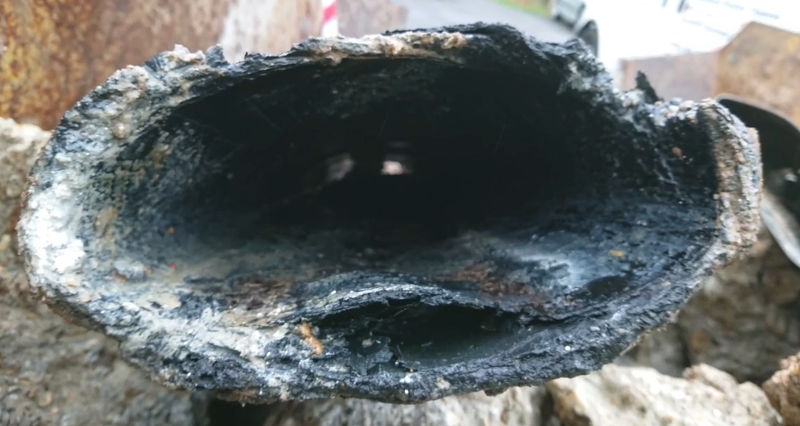Your drainage contractor may come across pitch fibre at your property, and when he does, he may be shaking his head, with a barely disguised smile.
Here we explain everything you need to know about the dreaded pitch fibre.

What is pitch fibre?
Pitch fibre is made from wood cellulose impregnated with coal tar. Some manufacturers in the UK even added asbestos to strengthen the material.
Why was pitch fibre used for drain pipes?
It was thought to be a fantastic new material, being much so cheaper than traditional clay pipes, and also very lightweight, easy to handle and use.
When was pitch fibre used?
Pitch fibre first originated in the 1890s in the USA and Canada, but in the UK it was used extensively from the late 1940s right through to the 1970s.
What is wrong with a pitch fibre drain?
Pitch fibre works reasonably well when dealing with normal waste water. However, it has been found to react adversely with hot water, fat or oil.
This wouldn’t have been such an issue in the 1940’s, but we now use more water, both hot and cold and so much oil and grease ends up in the drains.
How long will a pitch fibre drain pipe last?
The life span of a pitch fibre pipe is thought to be about 40 years, meaning that many pipes have come to the end of their life expectancy. Some blister or distort and in the worst cases collapse, blocking the drain completely.
Does pitch fibre contain asbestos?
UK Manufacturers added asbestos to pitch fibre to strengthen the material, however it is bonded in the coal tar, so it is normally safe, unless disturbed.
Should all pitch fibre lines be repaired?
We recommend pitch fibre drains that are distorted or bellied are always repaired before any damage gets worse, hopefully without an excavation.
But what if pitch fibre pipes are not damaged?
We wouldn’t normally recommend lining a pitch fibre pipe that had no defects. The one exception would be if a pitch fibre pipe runs under a house.
The huge expense and upheaval of digging up your living room to replace a collapsed pipe would make lining an undamaged pipe a sensible option.
A perfect drainage example of the old proverb “a stitch in time save nine”.
What is re-rounding?
A re-rounding tool is dragged through the pitch fibre pipe with a high tension winch which forces the deformed pipe into its original shape.
This then allows the engineer to install a resin liner inside the pitch fibre pipe, which then hardens to be strong enough to last at another 40 years.
Can you claim on home insurance for pitch fibre?
This is not clear cut. Some insurance companies may refuse to pay out as they say it has deteriorated over time, rather than as accidental damage.
Sometimes pitch fibre is actually mentioned as an exclusion in the policy.
You can see more information on whether your pitch fibre problems are covered by your home insurance on the Financial Ombudsman website.
Still confused by pitch fibre?
If you have problems with pitch fibre pipes and you need some free expert advice, please call 0800 357 9371 or email info@draindetectives.co.uk.
